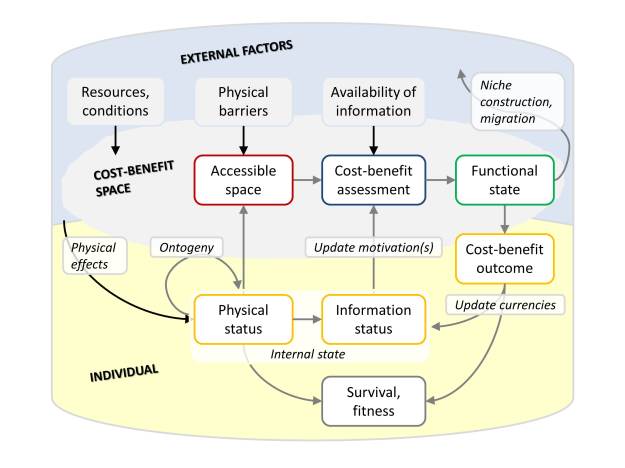I have a soft spot for graphical concept models. Some of my favourites include the reactive scope model (Romero et al 2009) and the population consequences of disturbance (PCoD) model (King et al 2015).
Here is what I call the “functional state approach” which I published in my PhD thesis, extending Nathan et al (2008) movement ecology paradigm to all functional behaviours.

The functional state approach consists of the focal individual, its biotic and abiotic environment (external factors), and their interface (cost-benefit space). Cost-benefit space is the outcome of behavioural options available to an individual, such as a trade-off between quantity and quality of offspring. Behavioural options are associated with a set of proximate goals or ultimate motivations (e.g. food, shelter). These options are limited physically and physiologically (accessible space) through individual history (ontogeny, e.g. sexual maturity), current physical status (reproductive state, body condition and homeostasis) and physical barriers. Cost-benefit assessment is the internal mechanism by which each individual selects a behavioural option. Information status encompasses cues, information and memory from both sensory and non-sensory inputs in the somatic nervous system. Functional state is the realized behavioural option and gives rise to a collection of behavioural traits that may influence the focal environment (niche construction). Currencies measure the actual cost-benefit outcome of the functional state and feedback to the internal state of the individual, thus with carry-over effects on subsequent behavioural options, functional states and fitness.
